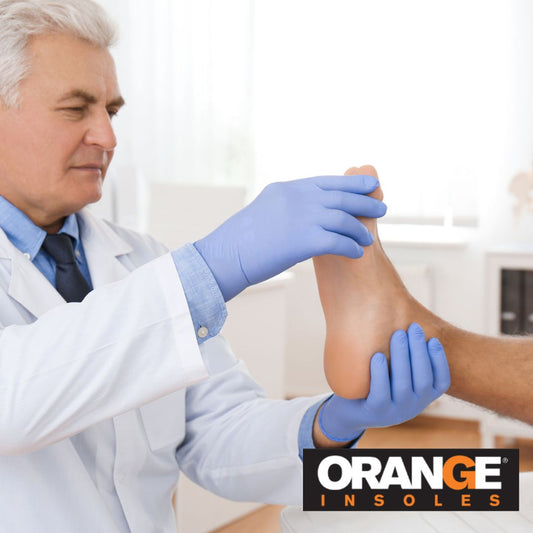When we encounter numbness in our legs and feet, it might be a cause for concern. Is it a fleeting problem or a sign of a deeper health issue? Understanding information about this condition is crucial (because it could be a symptom of something serious), as is recognizing when to seek professional guidance.
Understanding Leg & Foot Numbness
Leg and foot numbness can range from a temporary "asleep" sensation to chronic issues signaling underlying health problems. It's essential to differentiate between these experiences to approach treatment correctly.
Differentiating between temporary numbness and chronic issues signaling underlying health problems involves paying attention to the context, duration, and associated symptoms of the numbness. Here’s a guide to help distinguish between the two:
|
Aspect |
Temporary Numbness |
Chronic Issues |
|
Context |
Occurs due to specific situations like sitting or standing in one position too long, or sleeping on a limb. |
Persistent or recurring without a clear trigger. Gradual development and increasing frequency may suggest underlying health issues. |
|
Duration |
Resolves quickly after changing positions or moving. |
Lasts for extended periods or occurs regularly over time. |
|
Frequency |
Occasional and directly tied to specific actions or positions. |
Regular occurrence without apparent triggers. |
|
Associated Symptoms |
Usually isolated, with sensation returning to normal once movement resumes. |
May include pain, tingling, weakness, or skin color changes. Other systemic symptoms might be present. |
|
Severity and Impact |
Generally does not interfere significantly with daily activities and doesn’t cause lasting harm. |
Can affect quality of life, limit mobility, or signal serious conditions requiring treatment. May worsen without intervention. |
|
When to Seek Help |
Not typically necessary unless temporary numbness becomes a regular pattern without obvious cause. |
Advised for numbness that is recurrent, long-lasting, accompanied by other symptoms, or impacts daily tasks. Early consultation recommended. |
Common Causes of Numbness in Legs and Feet
Conditions such as Peripheral Neuropathy, Diabetes, Spinal Issues, Poor Circulation, and lifestyle factors like alcohol abuse and tight footwear can all contribute to numbness. Each cause affects the body differently, necessitating a tailored approach to treatment and management.
Peripheral Neuropathy
What It Is: Damage to the nerves outside your brain and spinal cord.
Symptoms: Besides numbness, you might feel tingling, pain, or weakness.
Common Causes: Diabetes, certain infections, vitamin deficiencies, and exposure to toxins.
Diabetes
Impact: High blood sugar levels can damage nerves (diabetic neuropathy), particularly in the legs and feet.
Symptoms: Numbness, burning sensation, and increased sensitivity to touch.
Management: Controlling blood sugar levels through diet, exercise, and medication.
Spinal Issues
Examples: Herniated discs, spinal stenosis, or other spinal injuries that press on nerves.
Symptoms: Numbness that can radiate from the back down to the legs and feet.
Treatment Options: Physical therapy, medications, or surgery depending on severity.
Poor Circulation
What It Means: Reduced blood flow to legs and feet, often from peripheral artery disease (PAD).
Symptoms: Cold feet, changes in skin color, and slow wound healing.
Lifestyle Changes: Quitting smoking, exercising more, and eating a heart-healthy diet.
Read more: Improve circulation with soaking your feet in salt water.
Lifestyle Factors
Alcohol Abuse: Can lead to nerve damage and worsen numbness.
Tight Footwear: Shoes that don't fit well can compress nerves, leading to temporary or chronic numbness.
Prevention: Moderating alcohol intake and choosing well-fitting, supportive shoes can help.
Diagnosing Leg & Foot Numbness
Seeking a medical diagnosis is pivotal. Tests may include blood work, nerve function studies, and imaging to pinpoint the cause, guiding an effective treatment plan.
Treatment and Management Strategies
- Medical Treatments: Address underlying conditions with appropriate medications or procedures (do not self-medicate! Seek only prescribed medications from your doctor).
- Lifestyle Adjustments: Improve diet, engage in regular physical activity, and cease smoking to support overall nerve health.
- Footwear Considerations: Incorporate Orange Insoles for added support, reducing the strain on feet to mitigate symptoms.
Exercises to Prevent Leg & Foot Numbness
-
Toe Flexes and Extensions
Flex your toes, hold for a few seconds, and then extend them. Repeat 10-15 times. This exercise helps improve blood flow and strengthens the muscles in your feet.
-
Ankle Circles
Lift your foot off the ground and rotate your ankle in a circular motion. Do 10 circles in each direction, then switch feet. Ankle circles enhance joint mobility and circulation.
-
Calf Raises
Stand with your feet hip-width apart and slowly raise your heels until you’re on your tiptoes. Hold for a moment, then lower back down. Perform 10-15 repetitions. Calf raises strengthen the calf muscles and improve venous return.
-
Leg Lifts
Lie on your back and lift one leg at a time, keeping it straight. Hold it in the air for a few seconds before lowering it. Do 10-15 lifts per leg. This exercise can help improve circulation in the legs.
-
Walking
Regular walks encourage circulation throughout the legs and feet. Aim for at least 30 minutes of brisk walking most days of the week. You can also have a pedometer (step counter) and aim to hit a daily 10,000 steps through accumulating steps throughout the day.
Read more: Do you know how to walk?
Diet and Diabetes Management
For diabetics, monitoring blood sugar levels is crucial. A diet rich in vegetables, whole grains, and lean proteins can mitigate the risk of neuropathy. Early signs of diabetic foot problems include persistent pain, swelling, and changes in skin color.
Immediate Relief Solutions for Foot Numbness
For quick relief from foot numbness, consider gentle massage, warm baths, or over-the-counter pain relievers recommended by a healthcare provider. These can improve circulation and provide temporary alleviation of symptoms.
When to Seek Help:
Immediate medical attention is advised if numbness is accompanied by weakness, pain, or persists without a clear cause. Sudden onset of these symptoms, especially if severe, warrants urgent care to rule out serious conditions.
The Footwear Factor
Choosing shoes that provide adequate support is essential for foot health. Make sure you are wearing shoes that fit you and are comfortable to wear. Incorporating a variety of shoes into your wardrobe and utilizing supportive insoles such as our Orange Full Length Insoles can play a significant role in preventing numbness.
Being attuned to what your feet are telling you and taking action accordingly ensures your feet remain healthy and comfortable. Selecting shoes with ample arch support and cushioning, for instance, can help distribute pressure evenly, reducing the risk of numbness and promoting overall foot wellness.

























































